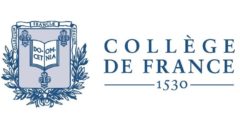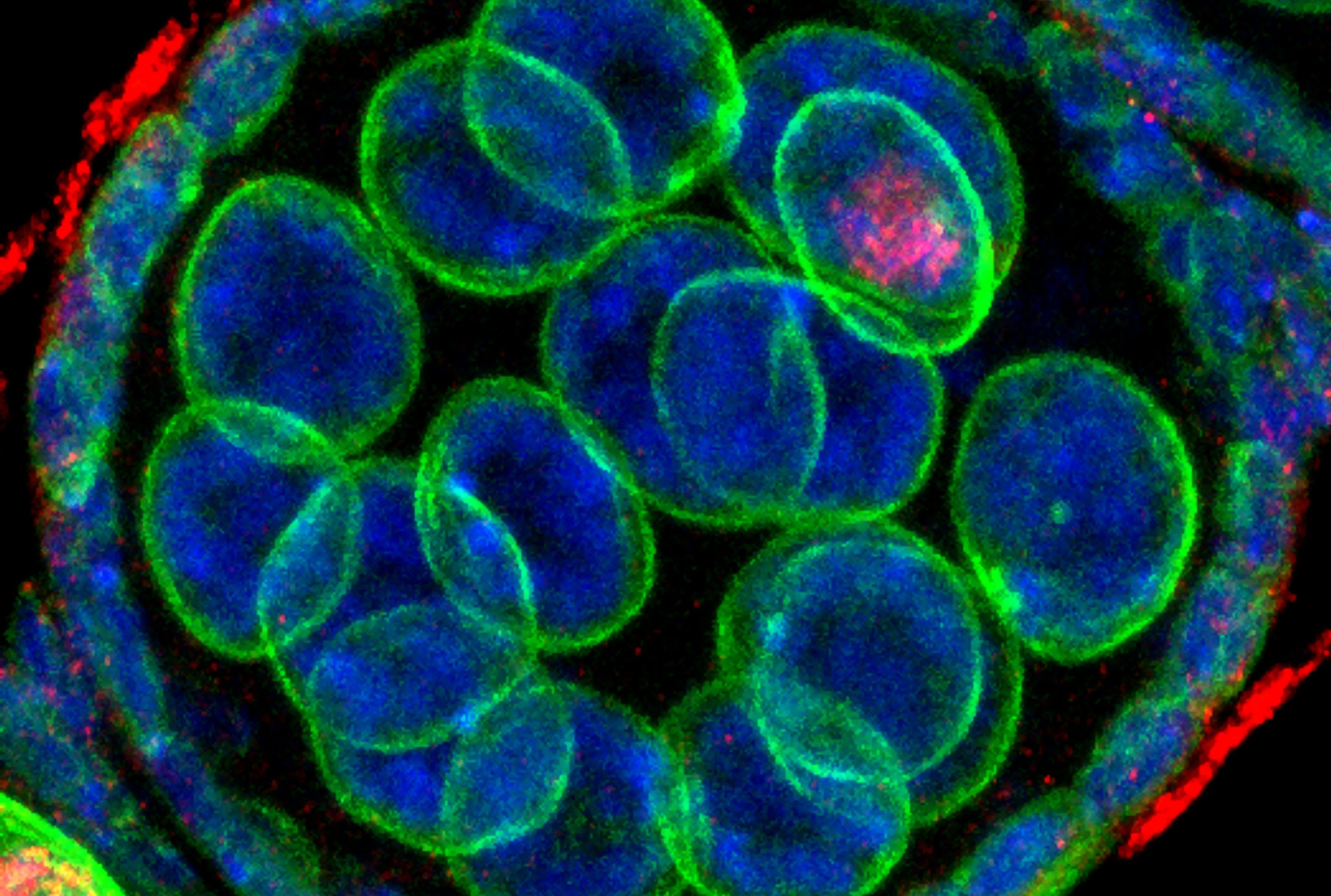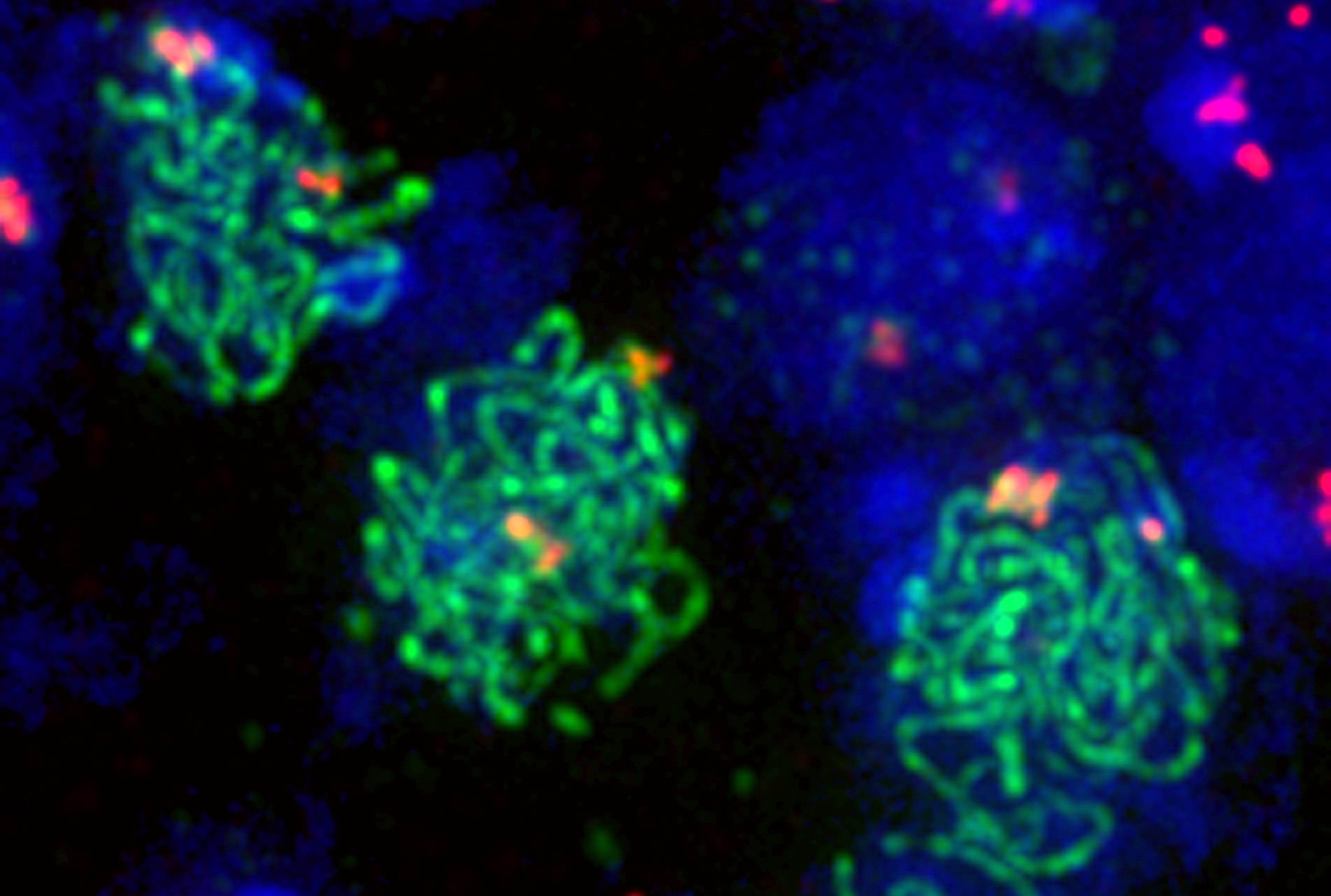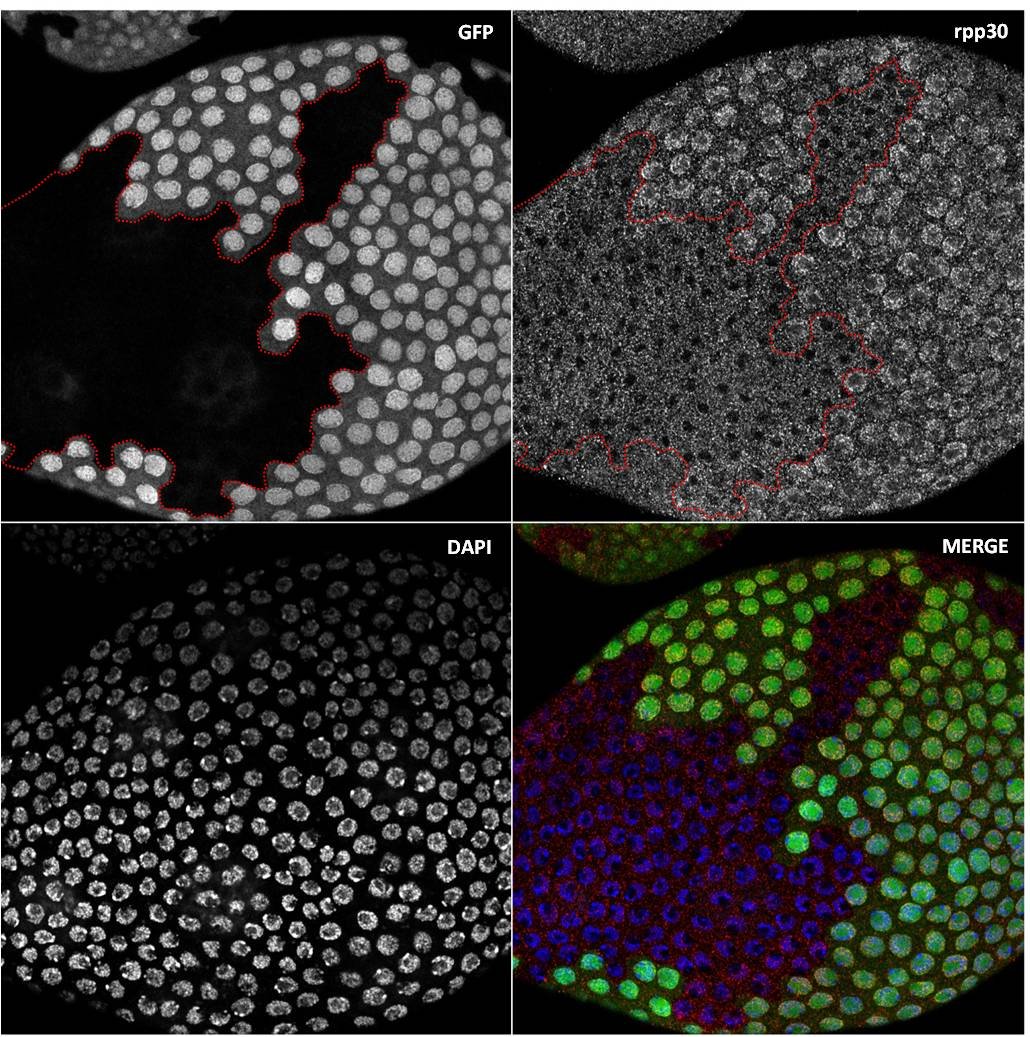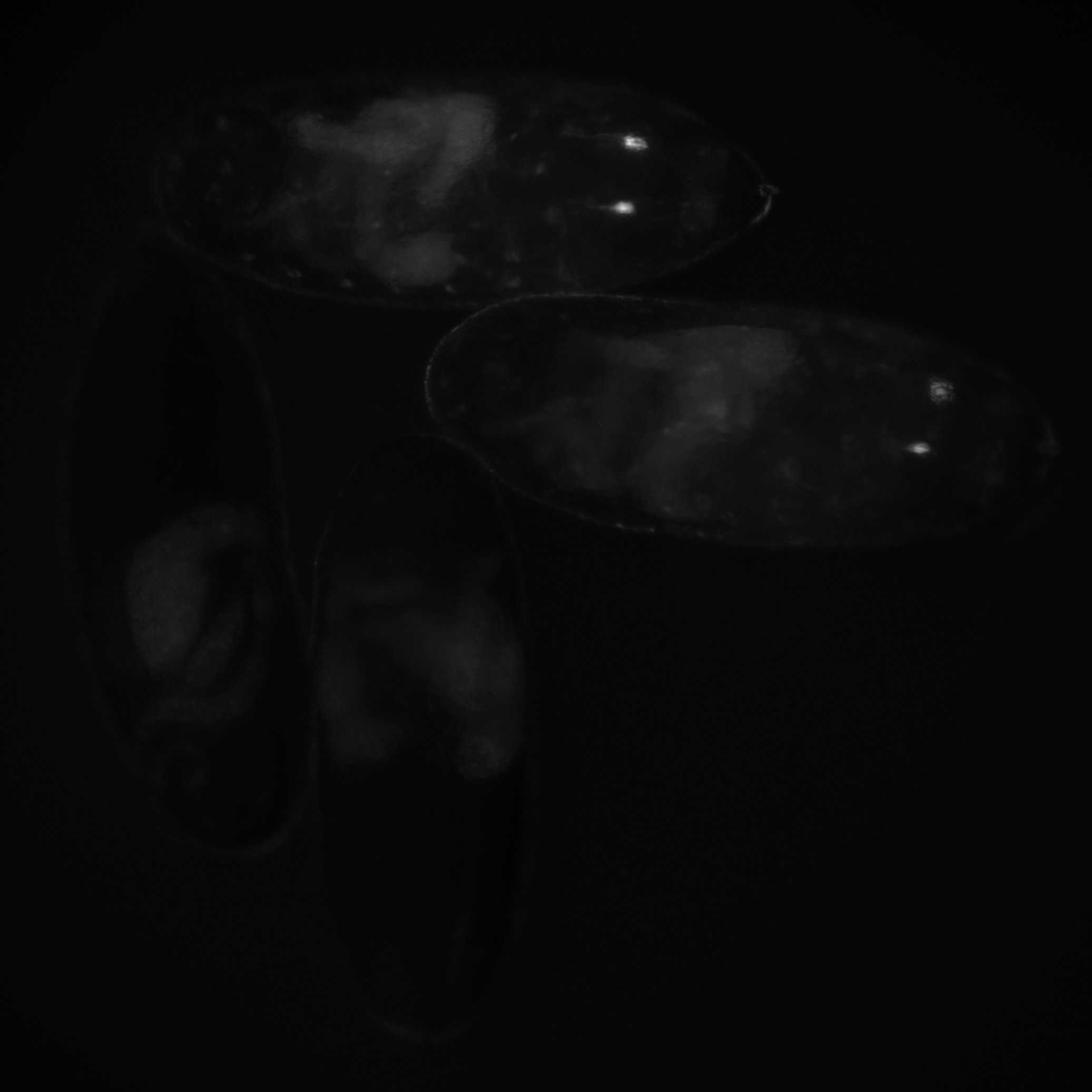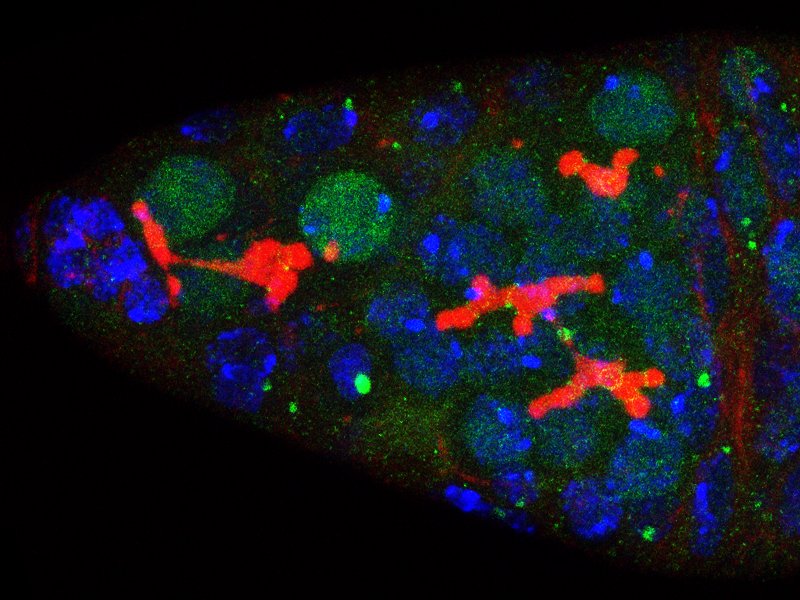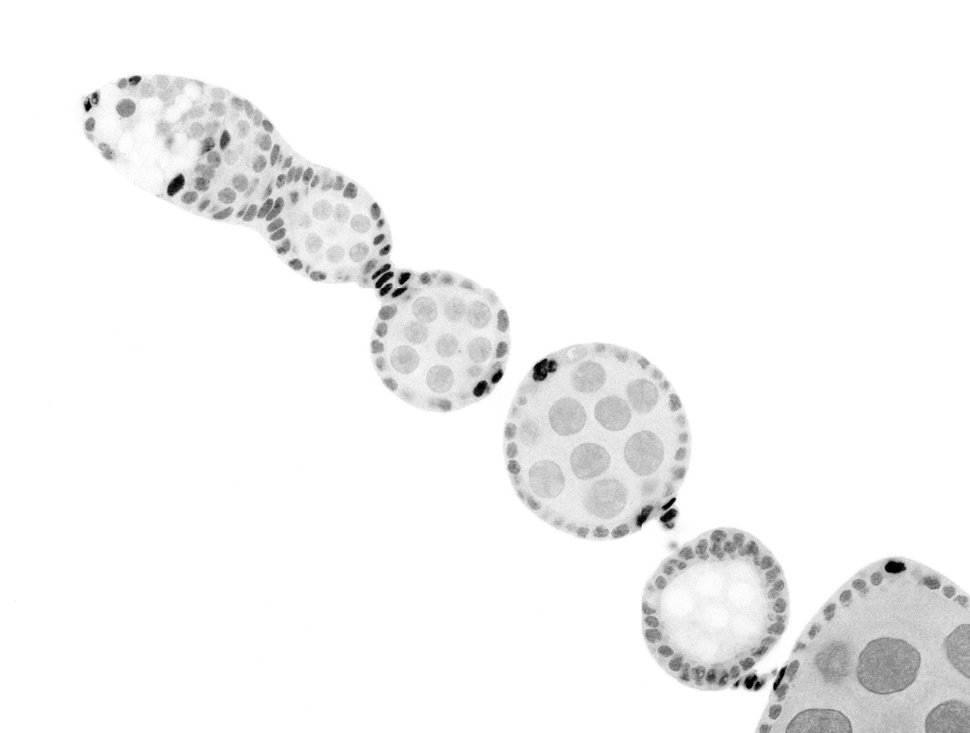Germ cells are the only cells which are transmitted from one generation to the next and can be considered immortal. Germ cells produce highly specialized cells, called gametes, which carry the genetic and cytoplasmic information defining a given species and which can initiate the formation of an entire organism.
Understanding how germ cells develop is not only of paramount medical interest for reproductive medicine, but is also crucial to comprehend how animal shapes and forms evolve through generations. Drosophila adult females present several key advantages as a model system to study germ cell development. In each ovary, there are germline stem cells (GSCs), which produce eggs (the female gamete) throughout the female life. It is thus possible to follow the entire development of germ cells from stem cell to fertilized egg in a single fly. Drosophila geneticists also keep on generating ever-more refined tools to control the function of every gene in the genome. It is for example possible to switch off one specific gene in germ cells at one precise time.
In females, GSCs are located at the anterior apex of a specialized structure called the germarium. GSCs divide asymmetrically leading to the formation of a self-renewing GSC and a differentiating cystoblast. The cystoblast then undergoes four rounds of asymmetric divisions with incomplete cytokinesis, leading to the formation of a cyst of 16 germline cells interconnected by cytoplasmic bridges called ring canals. Only one cell becomes the egg and goes through meiosis, while the 15 remaining cells become polyploidy nurse cells. Despite representing an excellent model system to study stem cell biology, cell cycle control, meiosis, cell fate determination or cell polarity, the germarium remains poorly explored. Our lab has taken a forward genetic strategy to find the genes regulating these different processes. We have mutagenized randomly the genome and generated mutant lines, which are defective in the formation of the germline. Based on this collection of mutants, we address the following questions:
1) How is the duration of cytokinesis regulated in germ cells? We identified mutations in Drosophila Aurora-B and Cyclin-B genes, which regulate complete abscission in germline stem cells and incomplete abscission in differentiating germ cells.
2) How do homologue chromosomes find each other during meiosis? We are studying the potential role of the cytoplasmic cytoskeleton in regulating chromosome organization during the early steps of meiosis in the germarium.)
3) How is the germline genetic material protected from DNA damages? The genetic information contained in the female gamete needs to be safely transmitted to the next generation. We are studying how mobile DNA elements such as transposons are silenced in germline cells.
4) How are the germline and somatic tissues coordinated for the morphogenesis of the egg chamber ? We recently discovered that mechanical coordination between the germline and the somatic tissues is essential for proper encapsulation.
